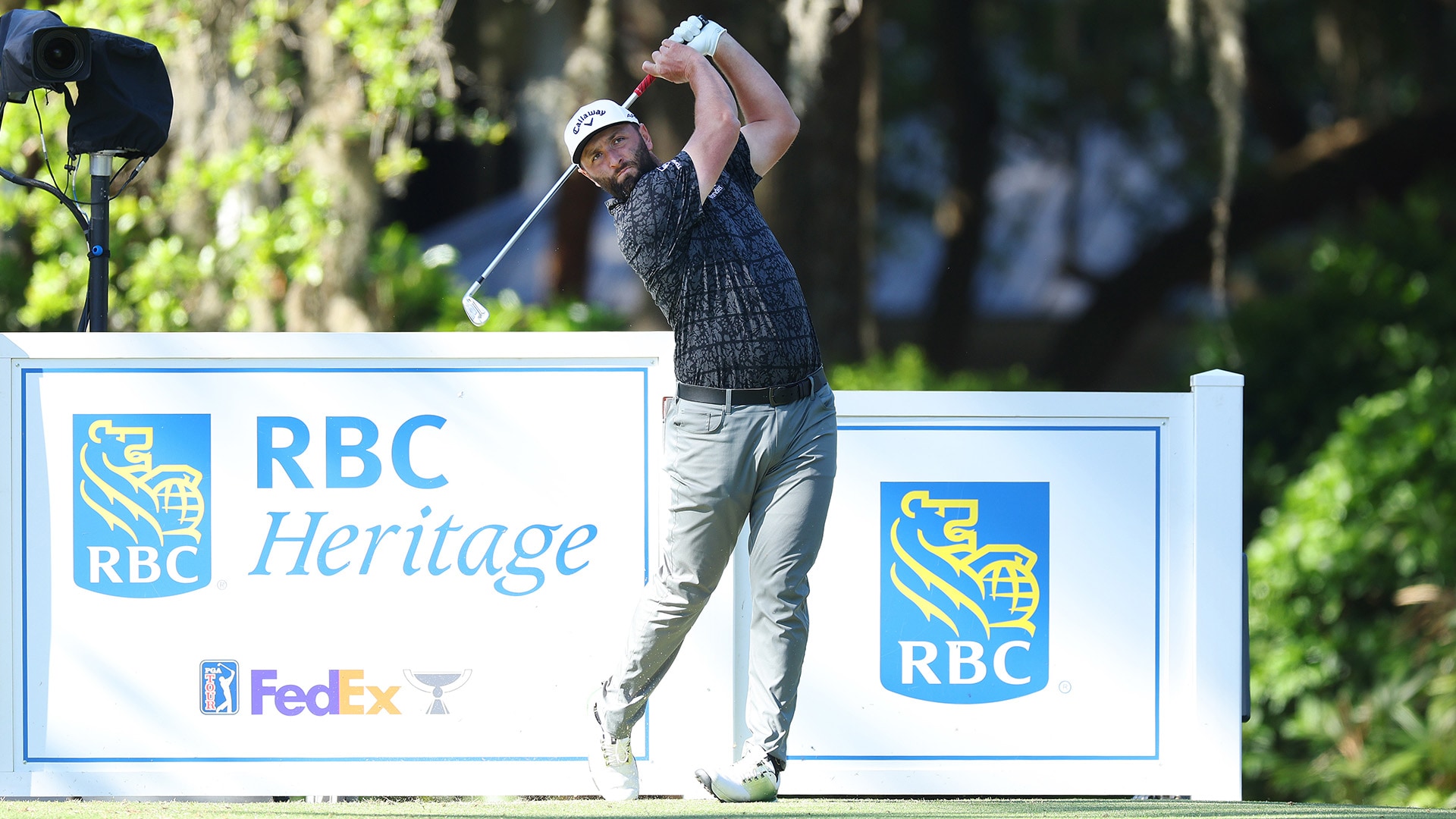Cut line: Harbour Town revitalized, Rahm committed and a $3 million week off

In this week’s edition we celebrate the RBC Heritage’s revival, Jon Rahm’s commitment and a reimagined fall that will look nothing like the old fall.
Made Cut
Safe Harbour. It wasn’t that long ago that the RBC Heritage was scrambling to survive, searching for sponsors and trying to find its place on a crowded PGA Tour schedule.
Those dark days, however, seem like a distant memory. RBC took over as title sponsor in 2012, the clubhouse was rebuilt to accommodate the growing infrastructure demands and in ’20 the Heritage was the Tour’s second event back after the COVID-19 pandemic halted play.
This year the Heritage is a designated event, which has produced its best field and the tournament has settled into a uniquely solid spot on the schedule the week after the Masters.
Harbour Town Golf Links has always ranked among the favorites on the Tour schedule among players and certainly a relaxing week on a coastal island is the perfect spot to unwind from the stress of the year’s first major, but the Heritage’s transformation is so much more than simply fortunate timing and an idyllic location.
Commitment. Following his whirlwind Sunday at Augusta National, which included countless interviews and the traditional dinner with members, Jon Rahm admitted there was a moment of pause on the road to Hilton Head Island, S.C.
“It did cross my mind,” Rahm said when asked if he considered skipping the Heritage. “But I made a commitment earlier in the year, and I want to honor that commitment. I also, talking to [his wife Kelley], I put myself in the shoes of not only the spectators, but the kids as well. If I was one of the kids, I would want to see the recent Masters champion play good or bad, just want to be there.”
It’s worth pointing out that Rahm was one of the few top players to question this year’s move to a designated event schedule and the mandatory minimums (20 events) placed on players, yet given plenty of reasons to skip the Heritage, he opted for the one thing the Tour can’t mandate – commitment.
Made Cut-Did Not Finish (MDF)
Designated event fatigue. Perhaps all you need to know about the grind of the current schedule is that Rory McIlroy, the co-architect with Tiger Woods of the Tour’s new designated event world, was willing to trade $3 million for a week off.
While that probably sounds insane to most of us, consider that McIlroy, who withdrew from this week’s Heritage without giving a reason, had already received $9 million from his runner-up finish on last year’s Player Impact Program. The remaining $3 million was withheld after the Northern Irishman skipped this week’s Heritage, the second designated event he skipped this year.
Over the last 10 weeks there have been seven designated events and McIlroy’s high-profile withdrawal is the only feedback the Tour should need to recognize there’s a problem. Next year’s schedule is being purpose-built to avoid these types of runs and create a better flow to the year, which will be crucial because if a $3 million loss wasn’t enough to compel McIlroy to tee it up at Harbour Town, next year’s move to no mandatory minimums certainly won’t inspire participation.
The fall. The Tour unveiled its reimagined fall schedule this week to plenty of feedback.
The fall will have fewer events (seven instead of nine) and will primarily provide players who finished 51st and beyond on the previous season’s FedExCup points list a chance to improve their status for the next year and provide a pathway into designated events.
Players who finished 51st through 70th the previous year will have secured their status but can play their way into the first two designated events by finishing inside the top 10 on the fall points list, which will not roll over to the new year. Those who finished between 71st and 125th during the previous season will need to play the fall events to maintain their status for the next season.
A victory in the fall will still come with a two-year Tour exemption and an invitation to the Masters, but the idea embraced by players in recent years that the fall can allow a player to jumpstart his season will no longer apply.
The new fall will look familiar but so much will be different.
Missed Cut
Off Pace. As if plucked from some ancient history book, pace of play resurfaced as a headline this week with Patrick Cantlay taking much of the smoke after what many saw as an egregiously slow pace on the weekend at the Masters.
There’s no reason to defend Cantlay. He’s not the fastest player on Tour, but this isn’t a Patrick Cantlay problem, it’s a Tour problem. Observers can dig into the pearl clutching all they want but there are no fast players on the Tour and if they are fast when they arrive in the Big Leagues, that gear is quickly stripped away.
The Tour has never been truly interested in speeding up the game, which is interesting given how Major League Baseball has transformed itself this season with a series of new rules. The average time for an MLB game this season is 2:38 per nine innings, that’s down from 3:03 last season.
Maybe there is no magic formula to speed up a Tour round by 25 minutes – think about that, 25 minutes – but if baseball, which is as rooted in tradition as golf, can do it, maybe it’s time the Tour took a harder look at pace of play.


